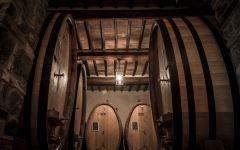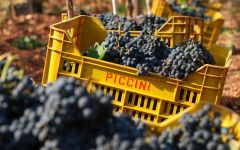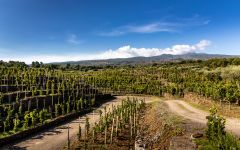Piccini Chianti 2002

Product Details
Your Rating
Somm Note
Winemaker Notes
Other Vintages
2022-
James
Suckling








The Chianti Orange Label is the iconic wine, and reflects the family’s ambition to rediscover Chianti as a contemporary wine. The wines are grounded in tradition yet have an innovative, charming and fun personality, providing a bold and exciting choice for wine lovers around the world. Tenute Piccini is among the most prominent wine producers in Tuscany, playing a leading role in the production of Chianti, Chianti Classico and Montalcino wines.
The family has five other stand-alone properties in top Tuscan wine regions as well as the two “volcanic estates” on the Etna and Vulture mountains, a parallel project to the successful Piccini brand. The family’s philosophy behind the boutique estates is very classical: producing wines that reflect the region, focusing on expressiveness of the grapes variety in relation to the area of origin. The family estates have been converted to organic farming. These practices, together with a selection of drought-tolerant rootstocks, lower density trellising systems, indigenous grape varieties replacing some of the less suitable international ones, aim at a holistic approach towards sustainable vine growing.

Among Italy's elite red grape varieties, Sangiovese has the perfect intersection of bright red fruit and savory earthiness and is responsible for the best red wines of Tuscany. While it is best known as the chief component of Chianti, it is also the main grape in Vino Nobile di Montepulciano and reaches the height of its power and intensity in the complex, long-lived Brunello di Montalcino. Somm Secret—Sangiovese doubles under the alias, Nielluccio, on the French island of Corsica where it produces distinctly floral and refreshing reds and rosés.

Famous for its food-friendly, approachable red wines and their storied history, Chianti is perhaps the best-known wine region of Italy. This appellation within Tuscany has it all: sweeping views of rolling hills, endless vineyards, the warm Mediterranean sun, hearty cuisine and a rich artistic heritage. Chianti includes seven subzones: Chianti Colli Fiorentini, Rufina, Montalbano, Colli Senesi, Colline Pisane, Colli Aretini and Montespertoli, with area beyond whose wines can be labeled simply as Chianti.
However the best quality comes from Chianti Classico, in the heart of the Chianti zone, which is no longer a subzone of the region at all but has been recognized on its own since 1996. The Classico region today is delimited by the confines of the original Chianti zone protected since the 1700s.
Chianti wines are made primarily of Sangiovese, with other varieties comprising up to 25-30% of the blend. Generally, local varieties are used, including Canaiolo, Colorino and Mammolo, but international varieties such as Cabernet Sauvignon, Merlot and Syrah are allowed as long as they are grown within the same zone.
Basic, value-driven Chianti wine is simple and fruit-forward and makes a great companion to any casual dinner. At its apex, Chianti is full bodied but with good acidity, firm tannins, and notes of tart red fruit, dried herbs, fennel, balsamic and tobacco. Chianti Riserva, typically the top bottling of a producer, can benefit handsomely from a decade or two of cellaring.
